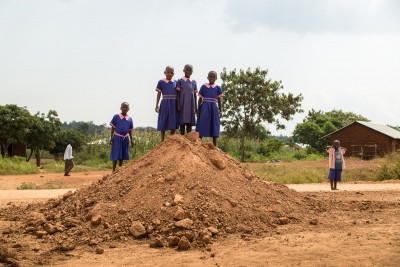A lily pond begins with a single leaf. Each day, the leaf population doubles – two four, eight, and so forth, so that on the 30th day, the pond is full of leaves. At this rate, of course, the pond will still only be half full on the 29th day. Such is the nature of exponential growth. It took until 1804 for the world to have a billion people; by 1927, the population hit two billion. Then it grew like popcorn: three billion by 1959, four by 1974, five by 1987, six by 1999, then seven billion by 2012. The World Wildlife Fund reports that, at our rate of collective consumption, humanity currently needs the regenerative capacity of 1.5 Earths to provide the ecological goods and services we use each year. Ironically, those who consume the least are more often affected by the advancing deserts and rising seas – the end products of those who consume the most.
Considering the projected 60 million Africans by 2020 who will have to move to avoid the advancing Sahara Desert; the tens of millions who will be displaced by the coming dust bowls of China; and the over 600 million who now live along coasts, at or below 10 meters above sea level, there is another kind of population crisis. Density will not only come from more people, but because the lands fit for human life are shrinking.
What can get lost beneath these figures and grand speculations are the humans themselves, whose lives depend upon adaptations that must come unnaturally quickly. These are the farmers I found in drought-stricken Illinois, the herders who confront the eerie creep of deserts in Inner Mongolia, the families in Thailand who gesture toward utility poles now underwater, and the Staten Islanders in the wake of Hurricane Sandy. When I talked to one New Yorker whose house had been flooded, he said, ”You know, Al Gore might just have something with this climate change issue.” Others were even less sanguine, but not for lack of trying. One farmer I spoke with in the Southwest who was severely impacted by the drought said, “I don’t know how much longer we can keep going like this, but we just have to hope and pray that things will get better.”
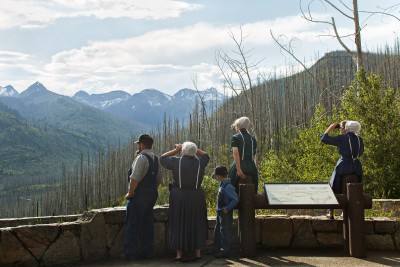
Mennonite Family, Glacier National Park, Montana, USA, 2011
Although this family was looking for a fire tower built by their grandfather in the 1930’s, they said they were surprised to see so much damage from more recent wildfires in the park. In the summer of 2015, wildfires forced campground and hotel evacuations in some areas of the park and caused many tourists to cancel their trips. Local businesses, which usually take in almost $200 million, were also negatively impacted by the fires.
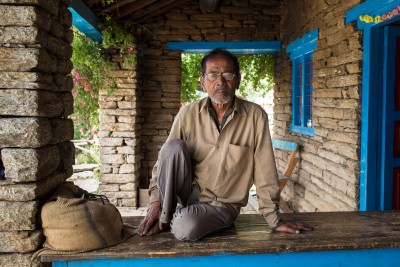
Guesthouse owner, Pindari Glacier Valley, Uttarkahand, India, 2012
Along the route to the sacred Pindari Glacier in the Himalayas, pilgrims will stop at small tea and guesthouses for a bite to eat and a place to rest overnight. Warming global temperatures are causing most, if not all, glaciers worldwide to retreat. The livelihoods of many individuals and communities that rely on fresh glacier melt-water are in jeopardy.
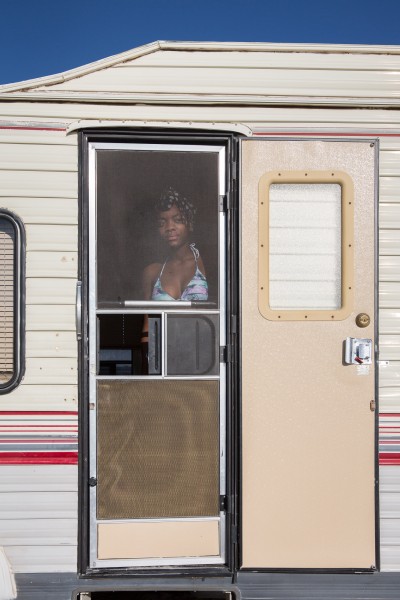
Shaday behind screen door of camper, Elephant Butte Lake, New Mexico, USA, 2014
Shaday and her family have come to Elephant Butte Lake for several summer vacations. Her brother Willie noted that this was the lowest level they had seen the lake at in many years and that attendance seemed down over the Fourth of July holiday weekend.
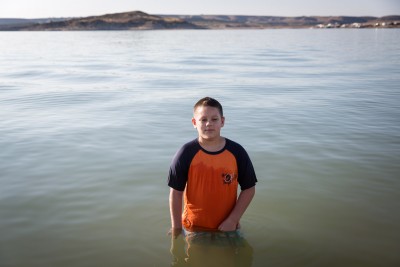
Moses in Elephant Butte Lake, New Mexico, USA, 2014
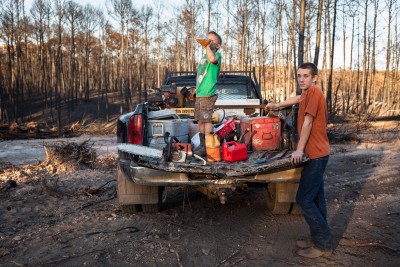
Two brothers taking a break from wildfire cleanup, East Bastrop, Texas, USA, 2011
Despite idyllic street names such as Peace Haven and Kingdom Path Lane, there was little to soothe the minds and hearts of the more than 1,500 families who lost their homes to wildfires in this small town east of Austin, Texas. These two boys, who were helping their father clean up their property, were the only people I saw as I wandered around the burnt-out neighborhoods.
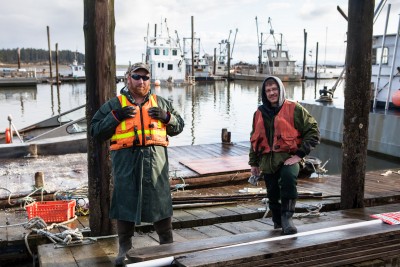
Oyster fisherman, Willapa Bay, Washington, USA, 2011
Ocean acidification is causing declines in the production of shellfish in Washington and at least 14 other states. Julie Ekstrom, one of the lead authors of a 2015 scientific report on the issue, stated: “Ocean acidification has already cost the oyster industry in the Pacific Northwest nearly $110 million and jeopardized about 3,200 jobs.”
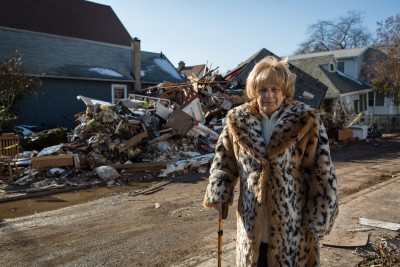
Virginia Omar, Staten Island, New York, USA, 2012
Virginia lost her home further down this street to Hurricane Sandy. She told me her plans were to stay with friends elsewhere for the time being; she did not know if she would return to Staten Island to live.
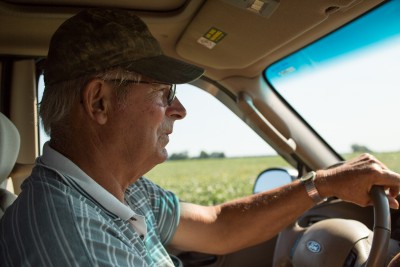
Cap Vanderheide, Effingham, Illinois, USA, 2012
As Cap drove me around his farmland he spoke of other years, such as 1988, that were drier than the summer of 2012, but still had better yields. His current corn yield was significantly down and he said he’d be lucky to get 20 bushels of soybeans that summer as compared to his usual 50 bushels.
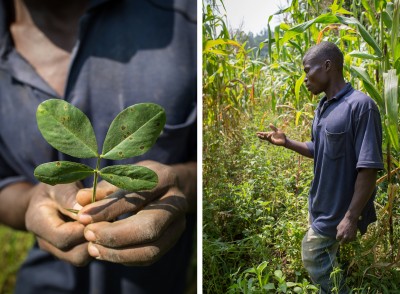
Elijah, a Kenyan farmer holding a diseased plant (left) and standing in his cornfield (right), Siaya County, Kenya, 2012
In western Kenya rural farmers are dependent on rain to water their fields. In the summer of 2012, some crops were doing well, while others were struggling. Elijah, a family farmer, pointed out how increasing temperatures and infrequent precipitation had brought an increase in crop pests and disease, diminishing his annual yield.
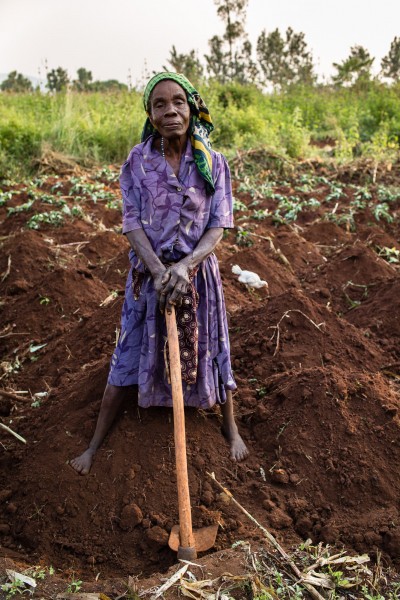
Anastasia Mugo planting potatoes, Siaya, Kenya, 2012
In the small village of Siaya in western Kenya, many local residents plant crops for their own family use and to sell for income. Like most farmers in the region they are primarily dependent on rainfall to water their crops, yet climate variability is creating more droughts and flooding. Crop loss, food security, clean water and health issues are some of the major concerns of residents in this area.
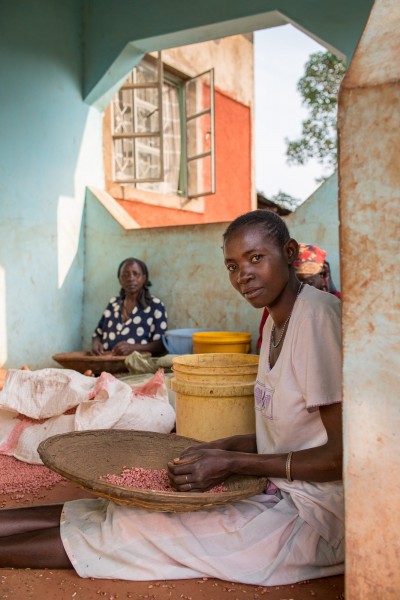
Magdalena sorting through beans, Siaya, Kenya, 2012
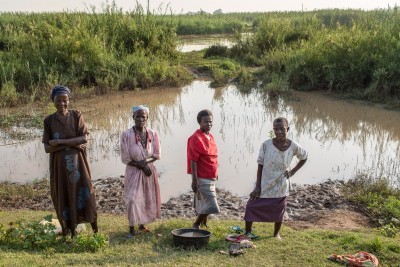
Women standing in front of flooded field, Budalangi, Kenya, 2012
Heavy rains in April 2012 caused severe flooding across Kenya, killing at least 84 people and displacing over 30,000. These women were upset that their local government had not done more to help them. By the time I visited three months after the storms, the floodwaters had still not completely receded, making it difficult to access fresh river water for cooking and bathing.
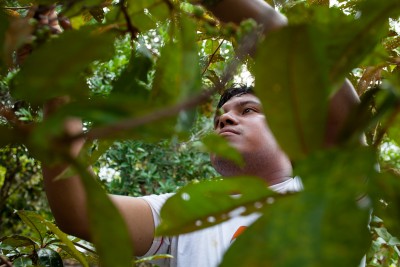
Marivelton Barroso, Director of the Association of Indigenous Communities of the Middle Rio Negro, Amazon, Brazil, 2012
Accompanied by Marivelton Barosso, I was fortunate to be able to visit many Amazonian river communities along the Rio Negro to learn more about the impacts of climate change on this part of the Amazon. One thing Marivelton noted was how insects and other crop pests such as ants and caterpillars are on the rise due to recent climate disturbances including fires, increased temperatures and drought.
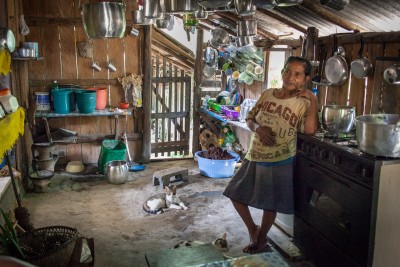
Indian woman in her kitchen, Amazon, Brazil, 2012
Many of the Indians I met spoke about how their traditional weather patterns have changed in recent years. Severe droughts in 2005, 2010, and more recently in 2015 dried up the region’s rivers making it all but impossible for locals to travel since there are few roads in the area. This woman said she noticed that winter storms are getting heavier and arriving up to two months earlier, thus hindering the planting of crops.
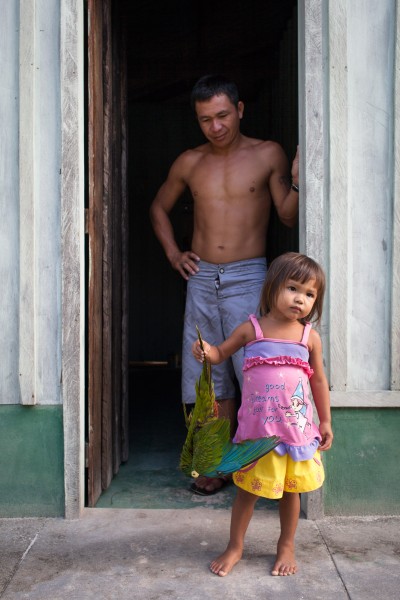
Young girl holding a parrot that her father had just shot for their dinner, Amazon, Brazil, 2012
Like residents of many developing regions, the Indians of the Amazon have not significantly contributed to the causes of climate change. But because of their close relationship with the land they are more affected than those in industrialized societies who are responsible for higher greenhouse gas emissions.
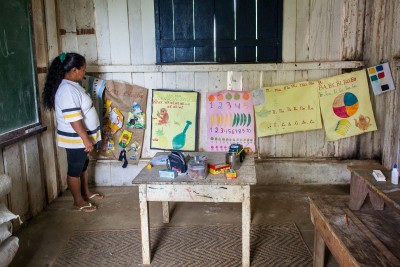
Village Chief, Auxiliadora, in her classroom, Amazon, Brazil, 2012
For many years, the Dow Indians were nomadic and considered to be of lower social status than other tribes, but in the 1980’s a missionary bought some land near São Gabriel da Cachoeira and gave it to the Dow to establish this small village. Now, almost forty years later, they have transitioned into a vibrant community, but one that is starting to worry about the changes in the climate such as an increase in mosquitoes carrying malaria and dengue.
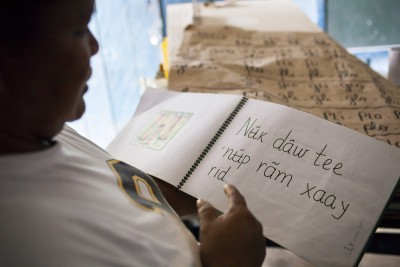
Auxiliadora with a book used to teach village children their native Dow language, Amazon, Brazil, 2012
This Dow village was the northernmost stop on our travels up the Rio Negro. The Indians I met there noted some changes in the climate but as Rozeani, a missionary worker here, said, “Even though they may not fully understand the science of climate change, it has affected them psychologically.”
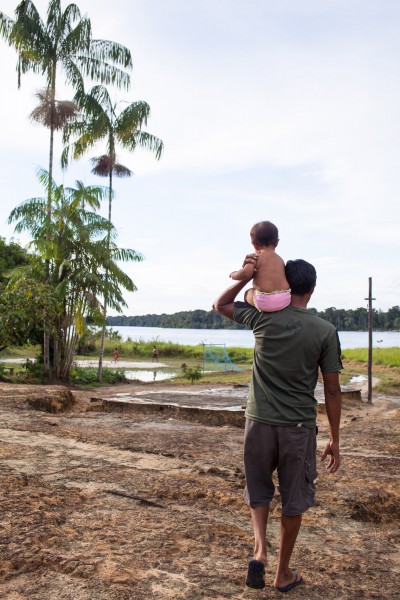
Father walking with his daughter to watch a soccer game, Amazon, Brazil, 2012
When asked about climate change, one Indian noted how the direction of the wind had shifted: “It would only come from the North right before the river was going to flood and now it comes from the North all the time.”

Woman stirring farofa, Amazon, Brazil, 2012
Manioc, also known as cassava or yucca, is an endemic root vegetable that is a staple of Brazilian diet. Since many products made from manioc, like farofa, can last a long time in their dried state, they can be stretched to create meals in leaner years when crops fail or do not get planted due to extreme weather patterns.
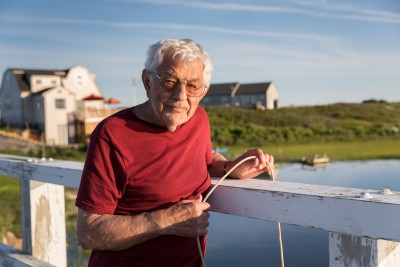
George Pappageorge, Nantucket, Massachusetts, USA, 2014
George and his wife bought a summer home on Nantucket in 1967 and he has been spending summers on the island ever since. He said the effects of climate change are very obvious: “The beach, it comes and goes. But the shoreline is now getting chopped up … When I first moved here the ocean was about 1,000 feet from us, but in the past 20 years we’ve lost about 400-500 feet.”

Monk looking at a photo of his temple being damaged by a severe storm, Khun Samut Chin, Thailand, 2012
Rising sea levels, storm surges, and erosion have damaged the temple of Khun Samut Chin, but the monks refuse to move their sacred temple back from the Bay of Bangkok. In order to still use the temple, they have raised the floor six feet to allow water to flood underneath during storm surges.
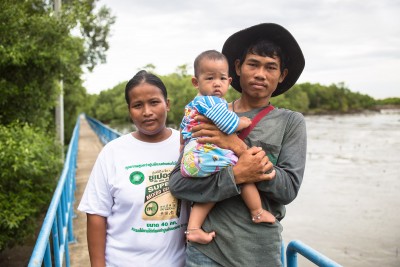
Family on new concrete walkway, Khun Samut Chin, Thailand, 2012
Over the past half-century, residents of this small fishing village outside Bangkok have been forced to move their homes inland several times to cope with rising seas. The old village’s wooden walkways that were damaged by rising seas have now been replaced with more durable concrete walkways.
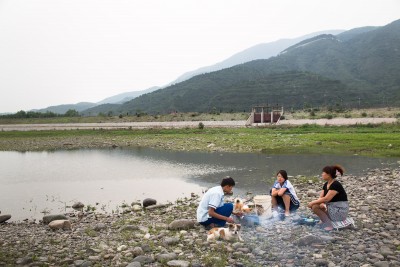
Family having picnic in dried-up riverbed, Mentougou district, China, 2012
My friends who took me to this district west of Beijing believed this section of the Yongding River was dried-up due to dams upstream that curb the river’s flow. Although this family may be enjoying their picnic, a 2000 report by the World Commission on Dams estimated that over a sixty-year period (1940 – 2000) large dams displaced 40 – 80 million people and another 400-800 million people have been affected by the resulting hydrological changes of rivers and ecosystems.
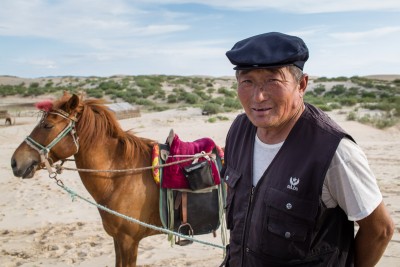
Cow herder and his horse, Chifeng, Inner Mongolia, China, 2012
Drought, along with deforestation and over-grazing, is turning large sections of Inner Mongolia into a desert. When I visited the area in 2012, this gentleman and his family were just one of four families barely surviving in a region where there used to be dozens of farmers and cattle-owners.
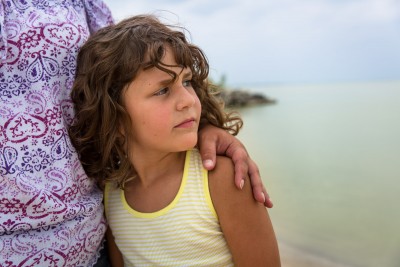
Rachel leaning against her mother Melinda at Maumee Bay State Park, Oregon, Ohio, USA, 2014
In August of 2014, a toxic algae bloom on Lake Erie created a two-day ban on tap water in Toledo, Ohio. At nearby Maumee Bay, signage warning of the dangers of the Microcystis algae (which is known to cause nausea, dizziness, vomiting, diarrhea and numbness) kept wannabe swimmers, like Rachel, on dry land for several more weeks. Melinda said she teaches her daughter to care for and about the environment by taking her out in nature; they couldn’t go in the water, but at least they were able to walk on the beach and pick up shells.
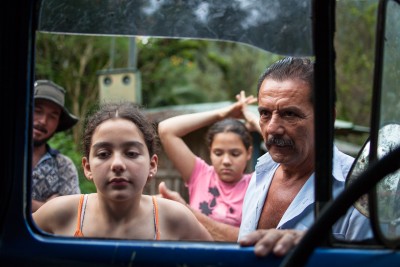
Homar Mora Duran with his daughter Monica, her friend Jerelene and neighbor Ronald Mora, Lanas, Costa Rica, 2011
In this remote region of central Costa Rica, long-standing local residents such as Homar live and work side-by-side with newcomers at eco-communities like VerdEnergia. But whether they have lived there for several decades or just several years, many I spoke with expressed their concerns about erosion and flooding due to deforestation, development, and erratic storms in the changing climate.
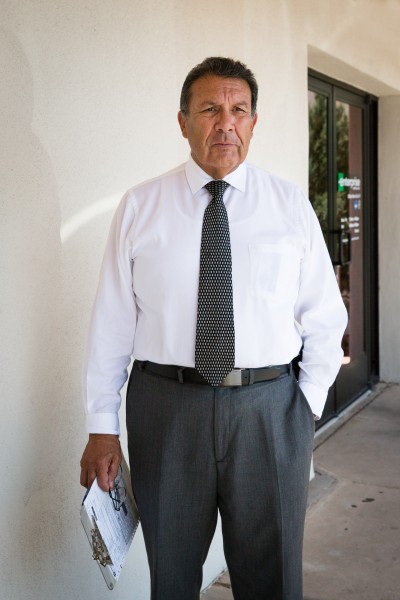
Ben Tapia, car rental agent, Santa Fe, New Mexico, USA, 2014
When I asked Ben if he had noticed any changes in the climate during the past decades, he tied his observations about increasing temperatures to the cars he’d owned: “First I had a 1976 F-150 Ford Truck, a 4 x 4 with no air conditioning, but you didn’t need it back then. Then I had a ’78 Datsun 280z. It also didn’t have AC, but I still didn’t need it. In 1980 I bought a Cadillac Seville that had AC installed, but I still didn’t need or use it much. But by the time I bought a 1997 Lexus, I was glad for the AC and find I use it all the time now in my 2010 Chevy Silverado.”
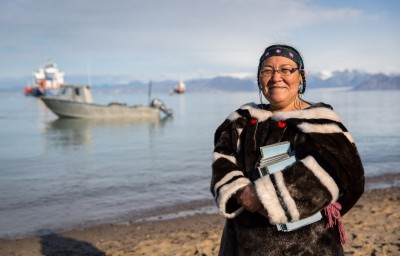
Rosie, an Inuit guide, at Pond Inlet, Canada, 2013
When tourists arrive at in the village of Pond Inlet, Rosie is one of several guides that give tours of their town. Pond Inlet is a vibrant community with deep cultural roots. Like many Inuit villages though, Pond Inlet is being affected by a warming climate that is melting the Arctic’s permafrost.
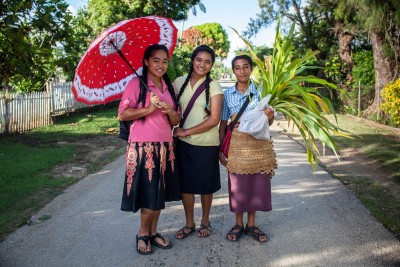
School children, Lifuka Island, Tonga, 2012
The Kingdom of Tonga is an archipelago of 177 islands in the southern Pacific Ocean. Often referred to as “The Friendly Islands,” Tonga’s 103,000 residents collectively have a very low carbon footprint. Yet, like many developing nations, Tongans are suffering the consequences of human-induced climate change.
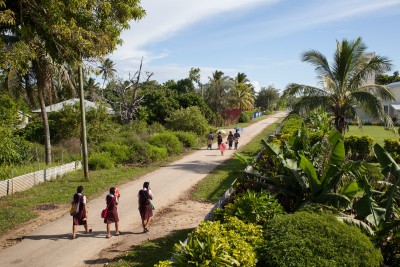
Students blocking the hot sun on their walk to school, Lifuka Island, Tonga, 2012
From the porch at my guesthouse, I enjoyed watching the school children and teachers walk to and from school each day. The items they used to block the intense heat of the sun intrigued me: parasols, textbooks, their hands, and one student even used his guitar. No strangers to heat, several locals I spoke with complained about the rising temperatures due to global warming.

